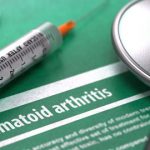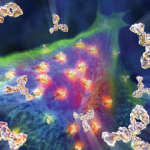‘We may find that more & more of our RA patients have, as this common mechanistic theme, autoantibodies to post-translationally modified proteins.’ —David Fox, MD
The anti-CCP test is also increasingly being used from a research angle. Some prior studies have used sera collected for other purposes to analyze early preclinical immune alterations in ACPA-positive patients. These investigations might potentially identify interventions that alter the disease course, especially in the early preclinical period. Dr. Holers notes, “A number of laboratories are interested in identifying individuals who are risk for developing classified RA in the future.”
He points out there are several ongoing placebo-controlled double-blind trials around the world and adds, “The expectation is that once there is a success in prevention that is replicable and has the right kind of safety profile associated with the drug, then that will kindle interest in screening to identify at risk individuals in the general population.”
But the research interest in ACPAs in people with preclinical disease goes even more broadly and deeply. Dr. Holers explains, “These laboratories are investigating these individuals’ immune function, their status, their mucosal inflammation and mucosal biology, all with a focus to understand what might be the fundamental cause of RA before you actually get arthritis.” This basic research might eventually yield insights leading to improved rheumatoid arthritis prevention as well as better treatments for fully developed RA.
Research on PAD inhibitors is also an area of ongoing interest. Such agents would block or diminish citrullination. PAD inhibitors have been successfully used in mouse models of rheumatoid arthritis.11 “PAD inhibitors could be very useful anti-inflammatory agents,” says Dr. Fox. “However, we don’t know if they would be totally safe, because you need citrullination to make NETs, and NETs are probably important in host defense against bacteria. So you’d have to find the sweet spot between inhibiting enough but not too much. But that’s true for all the medicines we use.”
Research is also ongoing into the larger group of antibodies, known as AMPAs, (anti-modified protein antibodies), of which ACPAs are a subtype. Other AMPAs have been found in patients with RA, although their specificity for RA is less well established. These include anti-carbamylated protein antibodies and those against malondialdehyde–acetaldehyde-modified epitopes.9 Dr. Holers notes, “They are not used clinically yet, but there is work being done to convert those to clinical tests.” The idea is that some patients currently classified as seronegative may be positive for specific AMPAs that contribute to disease pathophysiology.
Work further investigating these AMPAs may help us better categorize and treat subsets of RA that exist on a clinical spectrum of disease with some potentially distinct pathophysiological processes. “The total universe of post-translational modifications of proteins that give rise to autoantibodies is gradually expanding,” notes Dr. Fox. “In the end we may find that more and more of our RA patients have, as this common mechanistic theme, autoantibodies to post-translationally modified proteins.”
“I think the ACPA system is very important because it brings together so many different threads of fascinating science,” says Dr. Holers.
Looking back at the first paper describing these autoantibodies, he notes, “You had this very simple observation in 1964, and from that there’s been exponential growth in publications related to citrullination and ACPAs and greatly expanding interest in it. We are also looking at the possibility to use it as a preclinical diagnostic test for prevention. From this modest beginning, this incredible juggernaut of work has evolved.”
He concludes, “I think as people look back on the history of rheumatology and RA, the discovery and characterization of the ACPA system is going to be one of the fundamentally important findings in the field that will have lasting impact.”

